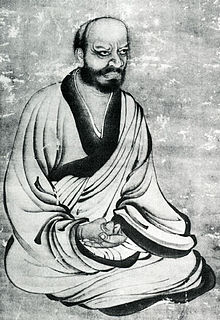
Back Linji AST Lin-ťi Czech Linji Yixuan German Linji Spanish Linji Yixuan Estonian Linji Yixuan Basque Linji Finnish Linji French Lin-csi Hungarian Línjì Yìxuán Italian

Linji Yixuan (traditional Chinese: 臨濟義玄; simplified Chinese: 临济义玄; pinyin: Línjì Yìxuán; Wade–Giles: Lin-chi I-hsüan; Japanese: 臨済義玄 Rinzai Gigen; died 866 CE) was a Tang dynasty (618-907) Chinese monk and teacher of the Hongzhou school of Chinese Chan (Zen). Linji was the leading figure of Chan Buddhism in the Tang, and the Recorded Sayings of Linji (Línjì yǔlù), which contains his teachings, is seen as a major Zen text which exemplifies the iconoclastic and antinomian spirit of Zen.[1] He is also known by the posthumous title Huizhao Chanshi (慧照禪師, “Meditation Master of Illuminating Wisdom”).[2]
Linji was a student of Huangbo Xiyun and is also considered to be the founder of the influential Linji school of Chan. This school actually developed in the Song dynasty (960-1279) among descendants of Linji, who created various mythic stories about Linji in the process of founding their new school of Zen.[3] Today he is seen as the founder of the various Linji regional traditions, including the Japanese Rinzai school, the contemporary Korean Seon schools (all which consider themselves to be of the "Imjae" line, i.e. Linji) and the Lâm Tế school of Vietnamese Zen.[4]
- ^ Welter 2008, p. 1.
- ^ Sasaki 2009, p. 77-78.
- ^ Welter 2008, p. 2.
- ^ Welter 2008, p. 81.